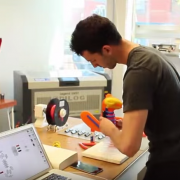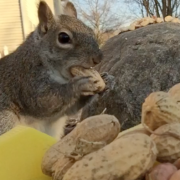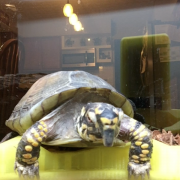Amazing! NY Arts Magazine review here: http://www.nyartsmagazine.com/?p=22701
art
Columbus Alive BioPresence Coverage
BioPresence has been featured in the Columbus Alive!
Read the Article here Art preview: BioPresence at Hopkins Hall
Artist Jessica Ann’s piece is featured and other BioPresence artists are mentioned as well.
Remember to come to the BioPresence exhibition in Hopkins Hall. The opening reception is Wednesday, December 9th at 6pm and continues until December 16th. Pieces will also be on display in the Mote galleries located on North High Street.
Audio Art Wanted
ATTENTION: Worldwide Audio Artists Please submit your sound art and/or music in any genre – experimental to pop – to our show. We seek original works that creatively manipulate the audio files of non-human, urban animal sounds. We encourage the use of the archive of animal vocalizations that are available at the Borror Lab of Bioacoustics at the Ohio State University. And we also invite you to submit sound works that utilize your own recordings of urban animals and the habitats we share.
Creating Animations from Wildlife Cam Captures
Students in Moving Image Art were given footage captured by wildlife cameras around the university and asked to create a rotoscoped video in their desired styles. Rotoscoping is a frame by frame process to capture motion in existing video footage. Students used drawing, masking, and/or effects to alter the footage and recreate it in a new form. The goal in this project was to re-present animals in order to encourage viewers to see them differently.
This work will be screened along with other student animations at the BioPresence exhibition
To see more BioPresence works made by students check our Vimeo page!
Art 3101: 3D Modeling Sculpture
The 3D Modeling course, taught by Professor Ken Rinaldo, serves as a platform for students to visualize their ideas and to have the opportunity to turn them into something concrete. Students are taught to research their ideas as well as explore the primordial forms of their ideas. This process allows the student to work out any problems they foresee before actually creating a version they can hold with their own two hands. They are encouraged to ask questions and explore possible scenarios that could spring forth when using their designs.
As a play on selfies, “themies” was the focus for one of the projects. The Telepistomological Themie project asked students to try and capture images of animal life on campus. Each student designed a device to complete this task. They began by sketching their ideas.
Here is a video of Ken talking about the project.
Erin Koyle designed a 3D printed food dish that held two camera phones. When the animals came to retrieve food, the cameras were triggered using a motion sensor mobile app. Erin aimed to capture images of her pet turtle feeding as well as squirrels around campus. Here are her design sketches:
 Upon reaching a feasible starting point students begin modeling with Cinema 4D computer software. Students are able to see their models in full form and make any changes necessary to the structure. Not only can the student artist create the desired object in Cinema 4D, they also model an environment suitable for that object. This helps others who will eventually view the work and provide feedback understand the goal of the creator. In this class, posters were created to pitch and relay ideas.
Upon reaching a feasible starting point students begin modeling with Cinema 4D computer software. Students are able to see their models in full form and make any changes necessary to the structure. Not only can the student artist create the desired object in Cinema 4D, they also model an environment suitable for that object. This helps others who will eventually view the work and provide feedback understand the goal of the creator. In this class, posters were created to pitch and relay ideas.
 Finally, after all of the brainstorming, sketching, and modeling is complete, the student is able to begin constructing their piece. This can include 3D printing, using the wood shop facilities, laser cutting, rapid prototyping and the CNC mill. There are little to no limitations for creating. Here we have student Jeremy Viny constructing his design that had to be 3D printed in many pieces:
Finally, after all of the brainstorming, sketching, and modeling is complete, the student is able to begin constructing their piece. This can include 3D printing, using the wood shop facilities, laser cutting, rapid prototyping and the CNC mill. There are little to no limitations for creating. Here we have student Jeremy Viny constructing his design that had to be 3D printed in many pieces:

When the project reached completion, students placed their objects in their chosen spaces for testing. Most students succeeded in capturing images of their desired animal.
Here are Erin’s images and video:










For more information about this course, click here
Art 4101: Moving Image Art
Moving image art, taught by Professor Amy Youngs, focuses on the creation of digital images for artistic presentation. Methods include using found footage, animating, and image manipulation. Students integrate other artistic mediums such as drawing, photography, cinematography, and sound.
One of the class projects focuses on the theme of biopresence on campus. This year, the Art and Technology community has been increasing the awareness of the presence of animals on the OSU campus. In this particular class, students were asked to notice animals on campus and use their skills to create a moving image work that would help others notice as well. One student, Maggie Willis, created a video work focusing on the marks animals leave behind that remind people of their presence. By using programs such as After Effects and Premiere Pro, she was able to create this unique interpretation she titled “ShadowStract.”
“Animals remind us of their presence through the marks they leave behind as they pass through, leaving abstract “shadows” in their wakes.”
The next semester, graduate instructor Jessica Ann taught the course. Students were given a similar assignment and an entirely new creative group were able to put their own spin on the topic. Jasmine Rajavadee used hand-drawn and stop-motion animation to bring small creatures to life in Thompson Library. This is one example of bringing multiple mediums together to form one cohesive artwork.
Created by Jasmine Rajavadee, for the Ohio State University’s Moving Image art class (Spring 2015).
“Addressing the theme of “biopresence,” we witness the attempts of small Ohio wildlife-inspired creatures attempt to make their own presence known to the humans in the urban space of the library.”
Here is another student work created by Sarah Hockman.
“This short film is a collage of several pieces of footage to compare and contrast an animal’s natural habitat, versus the urban environment they become surrounded by due to human presence.”
-Shot using GoPro Hero 3+, Samsung Galaxy S5 smartphone, Nikon D3100.
-Edited using Adobe After Effects, Adobe Premiere Pro CC
For more information on this course click here.




